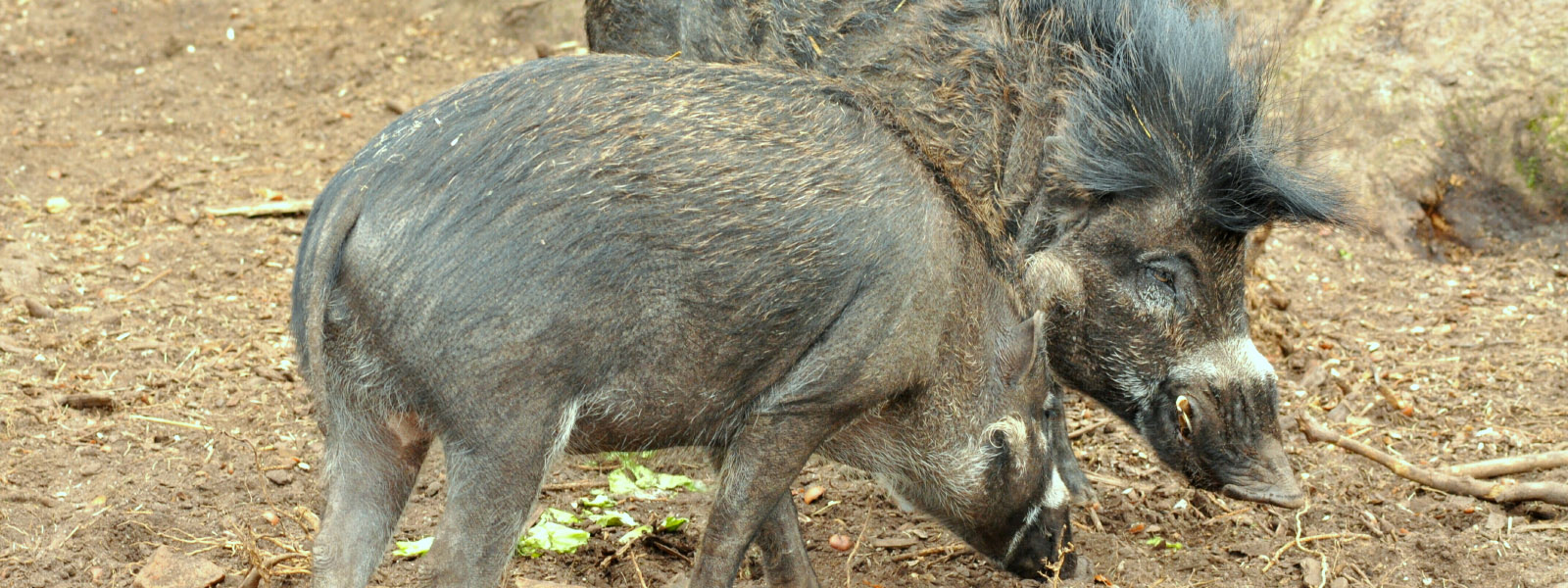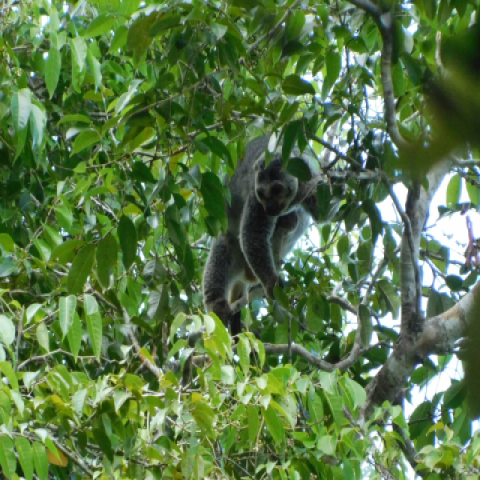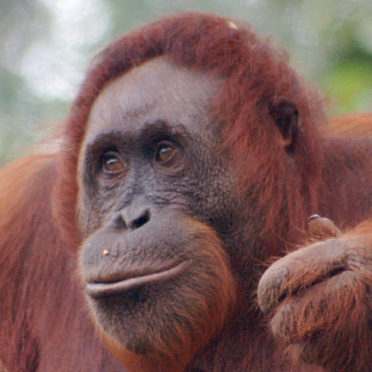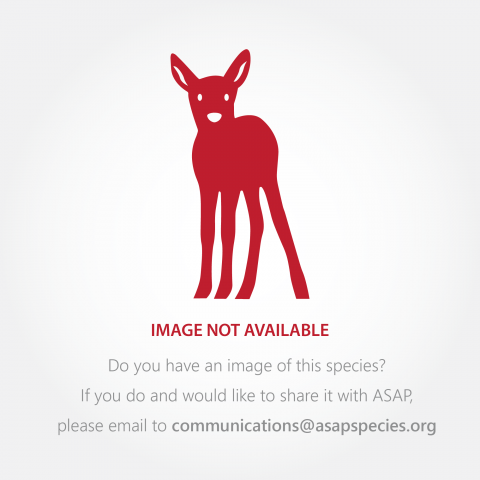Conservation Actions
Sus cebifrons is now fully protected by Philippine law, though enforcement of protection measures is generally poor in most areas, including many 'protected areas', owing to lack of resources and other factors. The species occurs in small populations in several 'natural parks', including Mount Canlaon (8,000 ha); North Negros (ca 18,000 ha); Mount Talinis/Lake Balinsasayao (ca 11,000 ha); and the proposed West Panay Mountains Natural Park (ca 70,000 ha). However, the formal declaration of the latter area was eventually stymied by lack of unanimity amongst relevant LGUs and a number of separate, smaller areas have since been declared, though these do not cover all of the most important sites, nor have any of these areas been significantly better protected since declaration owing the absence of any corresponding national budgetary allocations.The Visayan Warty Pig Conservation Programme (VWPCP) was formally established in 1992 under the aupices of a new Memorandum of Agreement (MOA) between the Department of Environment and Natural Resources (DENR, Government of the Philippines) and the Zoological Society of San Diego (ZSSD, USA), to facilitate development and implementation of a wide-range of conservation-related activities. These include wide-ranging surveys and other field research, education awareness campaigns, assistance in the establishment of new protected areas, diverse personnel training and other local capacity-building initiatives. The latter also including assistance in the establishment of three local threatened species rescue and breeding centres (one on Panay and two on Negros) with a view to the establishment of properly structured conservation breeding programmes and, hence, the accession and management of pure-bred founder populations of these animals whilst the opportunity to do still existed. The ensuing breeding programme has since been extended to other breeding centres locally and internationally, and is hoped that this will also enable future reintroductions of these animals to selected sites in Cebu and other islands (Oliver 1993a,b, 2004; Oliver and Wirth 1997; Lorica and Oliver 2007).
Recommended conservation actions include:
1. Enhance management and protection of existing protected areas and/or assist establishment of new 'local conservation areas' (in effect 'municipal reserves') and/or private nature reserves.
2. Reinvestigate the current status of this species on Masbate and develop and implement relevant conservation management recommendations for the enhanced future protection of any remaining native forest habitats and the potential future reintroduction of this (and other West Visayan endemic species) on this island and on Cebu.
3. Implement priority recommendations re. local awareness raising arising from recent, range-wide 'ethnobiological' surveys, revealing both currently low levels of awareness re. local protection legislation and prevalence of 'recreational', 'reprisal' or 'commercial' (rather than 'subsistence') hunting in all key sectors.
4. Conduct (or complete) systematic (including mtDNA) research on intra- and inter-population variation amongst surviving Negros and Panay Island populations.
Location Information
This species is endemic to the West Visayan Islands (or Negros-Panay Faunal Region) of the central Philippines, where previously it occurred on Panay, Guimaras, Negros, Cebu, Masbate and (probably) Ticao Islands (Heaney et al. 1998, Grubb 2005, Oliver 1993a, Oliver et al. 1996). It is not known whether S. cebifrons or S. philippensis formerly occurred on the neighbouring island of Siquijor, where wild pigs have also been extirpated, but this species is replaced by S. philippensis on Bohol and all other larger Philippine Islands east of Huxley's Line, except on Mindoro where it is replaced by S. oliveri (Groves 1997, 2001; Oliver 1995, 2001; Oliver et al. 1993). This species has been extirpated from most of its range, and fragmented populations survive today only on Negros, Panay, and possibly Masbate (Oliver 1995).Geographic Range
Extant
Philippines
Population Information
Sus cebifrons has been eliminated from three of the six islands where it was known or presumed to have occurred formerly; i.e. Cebu (where the species was last reported in 1960s), Guimaras and Ticao Islands. It is also close to extinction, if not already "functionally extinct", on Masbate, where the species was last confirmed in 1993, at which time only a few individuals were reported to survive in one location. Consequently, potentially viable populations now survive only in the last remaining forest fragments on Negros and Panay Islands (collectively comprising ca 6% and >4% of land area, respectively). Though genetic contamination via hybridization with free-ranging domestic or feral pigs has also been confirmed as occurring in most (perhaps all) of these populations (Oliver, 1993a, 1995, 2001).Threats
All of the few remaining populations of these animals are now widely fragmented and declining; both through former widespread commercial logging operations, continued low-level illegal logging and agricultural expansion (particularly slash-and-burn cultivation or "kaingin"), and hunting pressure. The latter continues throughout its remaining range, both by local farmers in hinterland communities and recreational hunters from larger cities. Both of these groups may also sell any surplus meat which usually commands at least twice the price of domestic pork in local markets and speciality restaurants. Efforts to reduce or discourage hunting are unfortunately also often compromised by generally negative attitudes towards these animals, which can cause severe damage to crops planted within or close to existing forest boundaries, and which are therefore regarded as pests and, hence, a legitimate target for hunting activities (Oliver et al. 1993). Unfortunately, this species is also threatened by genetic contamination via hybridization with free-ranging domestic and feral animals of ex-Sus scrofa origin, and hybrids have been confirmed from almost all remaining population sites (Blouch 1995; Oliver 1995, 2001).Partners
IUCN Red List Account Link
Please click here to see the species' IUCN Red List Account page.Photo Credits
Roland Wirth (category and featured image)








